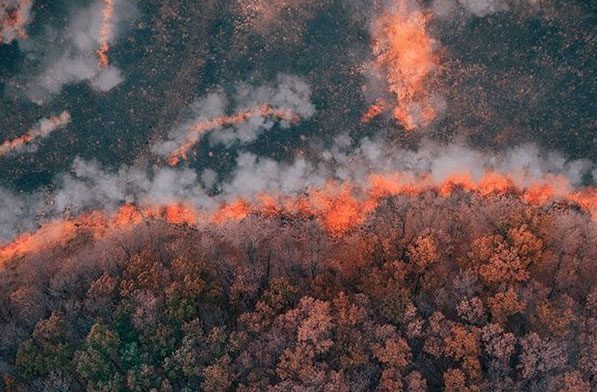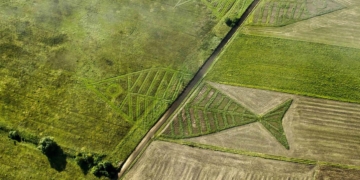Scientists Trace Ancient Wildfires Using 430-Million-Year-Old Coal from Wales and Poland.
This discovery offers valuable insights into how life on Earth thrived during the Silurian period.
During this time, plant life heavily relied on water for growth. Ancient wildfires devastated short vegetation, along with various grasses that reached knee or waist height.

Silurian landscape with enough vegetation to spread large wildfires.
Researchers noted that the landscape was largely devoid of trees, dominated instead by ancient fungi Prototaxites, which could grow up to 9 meters tall.
Ian Glasspool, a researcher at Colby College in Maine, stated: “The evidence of wildfires corresponds with the evidence of the earliest land plants. For wildfires to occur, there needs to be fuel, typically vegetation, an ignition source, which could be lightning, and enough oxygen to sustain the fire. The Silurian landscape must have had sufficient vegetation to propagate large wildfires, leaving a record of that event.”
The wildfires left behind coal deposits indicating that the Earth’s atmospheric oxygen levels at that time were at least 16%.
Today, that level is about 21%, which has changed significantly throughout Earth’s history. The increased longevity and photosynthesis of plants contributed more to the oxygen cycle during the periods when wildfires occurred. Understanding the details of the oxygen cycle will help scientists gain deeper insights into how life developed.
The landscape in Europe now is vastly different from hundreds of millions of years ago. Wildfires have been an integral component of long-term Earth system development processes.
The discoveries made by Ian Glasspool and colleagues help break the previous record for the oldest documented wildfire, which was 10 million years old. This incident also underscores the importance of wildfire research in charting Earth’s history.





















































